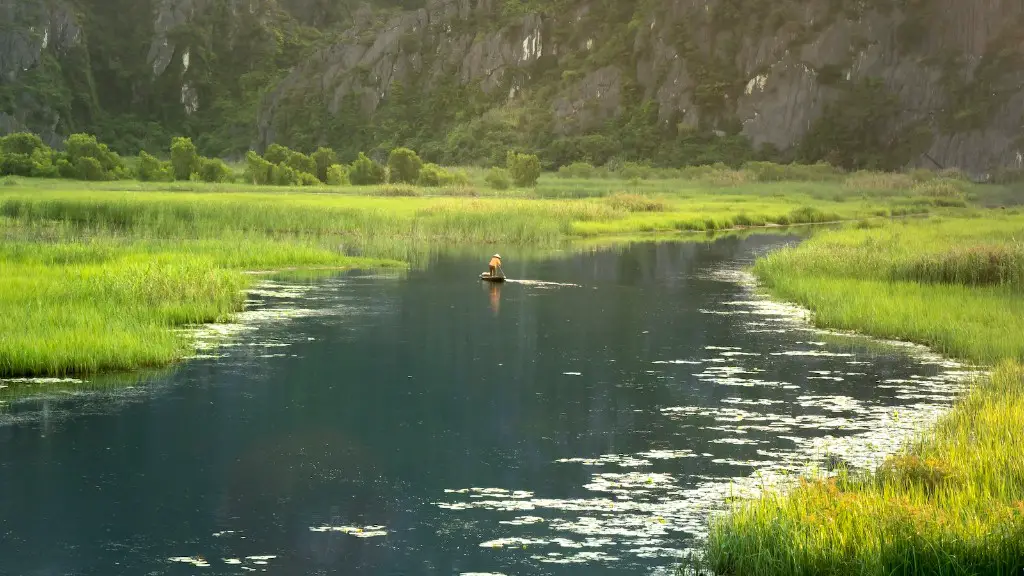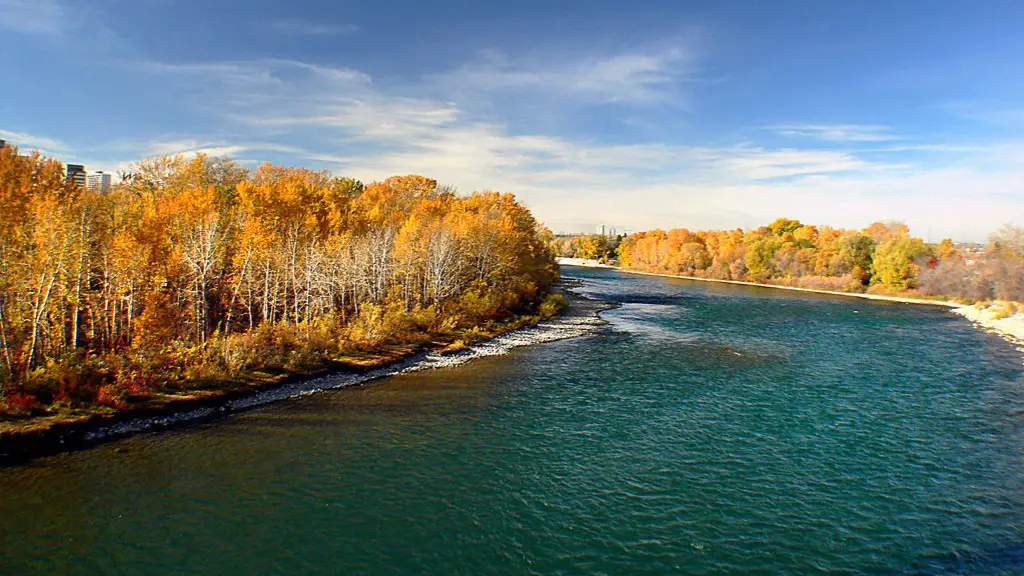The mighty Mississippi River, the fourth largest and third longest river in the world, has been called many things as many as 11 different names by different Indian tribes who lived along its banks.What city does the Mississippi River end in? The answer is New Orleans, Louisiana.
Often described as the ‘Father of Waters,” the Mississippi River runs through ten US states, including Minnesota, Wisconsin, Iowa, Illinois, Missouri, Kentucky, Tennessee, Arkansas, Mississippi, and Louisiana, before flowing into the Gulf of Mexico. The Mississippi watershed, encompassing over 40% of the United States, is the third largest watershed in the world, behind the Amazon and Congo-Zaire rivers. The Mississippi is beloved not only for the life it brings to its shores, but for its rich history and cultural significance.
An estimated 300 million tons of sediment are carried by the river every year, making it an enormous force of transportation and natural engineering. Historical accounts reported large logs and other debris piling up in front of the mouth of the river as it drained into the Gulf of Mexico. The amount of silt and sediment build-up is called the ‘delta effect.’ As the Mississippi flooded seasonally and backed up through its many tributary rivers, the sediment would be pushed to the Gulf in what is called the ‘backwater effect.’
The final three to four hundred miles of the Mississippi River include a dramatic delta near New Orleans. With a combination of dynamic sediment deposition, flooding, and swamps, the delta is constantly shifting and creating a shifting shoreline and constantly changing channels. This creates a dynamic river system, but it also creates an unstable, and often dangerous, environment for navigation and development.
Subsidence, or settling, of the delta is also a major issue. Due to natural processes, as well as human activities such as oil and gas extraction and levee construction, the delta is slowly sinking. This is compounded by the aforementioned delta effect, with sediment not able to regenerate the land as quickly as it is lost. As the delta subsides and the shoreline recedes, the risk of catastrophic flooding increases, putting additional strain on the environment.
Over the years, the US Army Corps of Engineers and other government agencies have attempted to manage the Mississippi River in order to reduce sediment build-up, fortify levees, and reduce the risk of flooding and other natural disasters. Some of the initiatives include dredging and channel stabilization and shoreline armoring. These interventions have helped to secure infrastructure and reduce the risk of catastrophic flooding, but they have also led to profound alterations in the river’s ecology and hydrology.
The Mississippi River is a powerful force and an invaluable natural wonder. It has been the lifeblood of many communities along its banks and its power and cultural history stretch back millennia. It remains an important priority for environmental, economic, and social protection, and it will continue to be studied and managed for generations to come.
Erosion and Landscape Changes
Erosion is a serious and continuous challenge in the Mississippi River Valley. The expansive river systems and tributaries, combined with its shifting channels, create a dynamic system that can erode land and create rapid changes in the landscape. This affects both the surrounding environment and the infrastructure, as riverside settlements, levees, and bridges are at risk of damage and collapse due to rapid erosion.
The US Army Corps of Engineers and other government agencies have been attempting to combat this issue since the 1920s, when they first began the process of managing and controlling the river, known as ‘leveeing.’ This involves building levees to contain and control the river within its banks, as well as using dredging and other techniques to divert and slow the water flow. This has some success in combatting erosion and mudslides, but other strategies, such as invasive plant removal, bank stabilization and stream diversion are also needed.
In addition to the engineering strategies, natural processes can also provide some degree of control. The Mississippi River Delta is an area of thick sediment deposits that can accumulate and slow down the flow of the river. Plants and trees, which are especially abundant in the delta, may provide some protection against erosion.
In order to ensure the health and safety of the surrounding ecosystem, there must be a comprehensive strategy that combines both engineering and eco-friendly strategies. It will take time, resources, and dedication to ensure the preservation and stability of the riverbanks and its delicate environment.
Flooding Prevention
Flooding is one of the most serious threats to the Mississippi River Delta. With its shallow depth and meandering channels, flooding can occur quickly and cause extensive damage to infrastructure, crops, and homes. As a result, flooding prevention has become an important priority for the federal government and local communities.
The Army Corps of Engineers is responsible for implementing flood control efforts in the area, such as maintaining levees, channels, and dams. They also use dredging and channel stabilization to reduce flooding by diverting the river away from certain areas. In addition, they are developing strategies to reduce sediment buildup, which can improve navigation and reduce flooding risk.
The local communities along the Mississippi River Delta have also been proactive in protecting themselves from flooding. In New Orleans, for instance, local flood protection measures include the promotion of planting rain gardens and green spaces, raising buildings, and promoting better drainage throughout the city.
The state of Louisiana is also a leader in flood control efforts, with multiple projects aimed to reduce flooding risk and protect the state’s fragile ecosystem. In addition to a federal flood protection plan, the Louisiana Coastal Protection and Restoration Authority is undertaking several projects to protect the state’s wetland areas and reduce flood risk.
It is clear that the efforts of the federal government, local communities, and the state of Louisiana are working together to protect the fragile Mississippi River Delta from the ever-present threat of flooding. With a comprehensive strategy for flood control, it is hoped that the area’s unique environment and culture can be preserved for generations to come.
Environmental Protection
The Mississippi River Delta is not just an important shipping pathway and source of industry, it is also an important habitat for many species of animals, birds, and plants. Its diverse environment provides an invaluable home for creatures both large and small, including several endangered species.
The unique ecosystems of the Mississippi River Delta are facing significant threats from pollution, habitat destruction, fisheries decline, and species extinction. In order to protect the area’s delicate environment, it is essential to implement effective strategies for environmental protection.
The US Army Corps of Engineers, in conjunction with many other federal and state agencies, is undertaking a number of initiatives to safeguard the environment. These include implementing regulations to control pollution, protecting and preserving wildlife habitat, and developing strategies to promote fisheries and other industries while minimizing the impacts on the environment.
In addition to government efforts, local communities are also playing an important role in protecting the environment. Projects such as beach clean-ups, rainwater catchment systems, and the promotion of green spaces and other conservation efforts are all helping to protect the precious riverside environment.
The Mississippi River Delta is an important and unique natural resource, and it is up to us to protect it for future generations. With the combined efforts of government, industry, and local communities, there is hope that this precious environment can be preserved and enjoyed for many years to come.
Economic and Cultural Significance
The Mississippi River Delta is not just a unique and important environment, it is also the source of immense economic and cultural significance. The river has long been the lifeblood of many communities who rely on it for water, transportation, and commerce. It is also the site of some of the earliest human settlements in North America.
The Delta is an important part of the US economy, as it is a major shipping route for river traffic and goods such as petroleum, coal, and grains, among many others. It is also a major fishing and sport fishing region, as well as a hub for recreation and tourism.
The Delta is also a source of immense cultural significance, as it is home to a number of famous African-American musicians, authors, and historians. These cultural icons have made the Delta a major cultural center, drawing visitors from around the world.
The economy and culture of the Mississippi River Delta have been integral to the US for centuries, and they continue to play an important role in the country’s future. With the ongoing efforts to protect the Delta’s fragile environment and its cultural importance, the area will continue to be a source of pride and awe for many generations to come.
Economic Benefits
The Mississippi River is responsible for providing a number of economic benefits to local communities, states, and the nation as a whole. It is estimated that the river generates more than $3 billion in revenue each year from shipping, recreational activities, and related industries.
The river is a major transportation artery, providing an important link between the Midwest and other parts of the United States. It is also a major source of energy, with hydroelectric dams providing electricity for many communities. The river is widely used for recreational activities such as fishing, boating, and water sports.
The Mississippi River has also been an important economic factor in regional and national economic development. Many communities have been able to make use of their local river resources to attract businesses, create jobs, and generate tax revenue. The river is also an important tourism destination, with visitors coming from around the world to experience its natural beauty.
The economic benefits of the Mississippi River are clear, and it is important to ensure that we continue to protect and preserve this essential resource. With the combined efforts of local communities, state and federal governments, and private industry, the unique resources and beauty of this important waterway can be preserved for generations to come.
Economic Development of the Mississippi River Delta
The impact of the Mississippi River on the economies of the states through which it flows is immense, and the region is an important part of the US economy. The Delta is an important shipping and transportation corridor and home to multiple industries, including petroleum, shipping, and fishing.
The region’s economy is also bolstered by its tourism and recreation industry, with visitors coming from all over the world to experience its unique history and culture. In addition to this, the river provides an important source of renewable energy, with multiple hydroelectric dam projects in place.
In order to improve the economic health of the region, local, state, and federal governments are working in tandem to promote economic development. This includes initiatives such as infrastructure improvements, tax incentives, and targeted economic development strategies to attract investment and create job opportunities.
The Mississippi River Delta is a vital component of the US economy, and its success is essential to the economic health of the nation. It is clear that economic development initiatives in the region must be implemented in order to ensure its future success, and the combined efforts of governments, businesses, and communities can help to ensure the region’s long-term prosperity.





